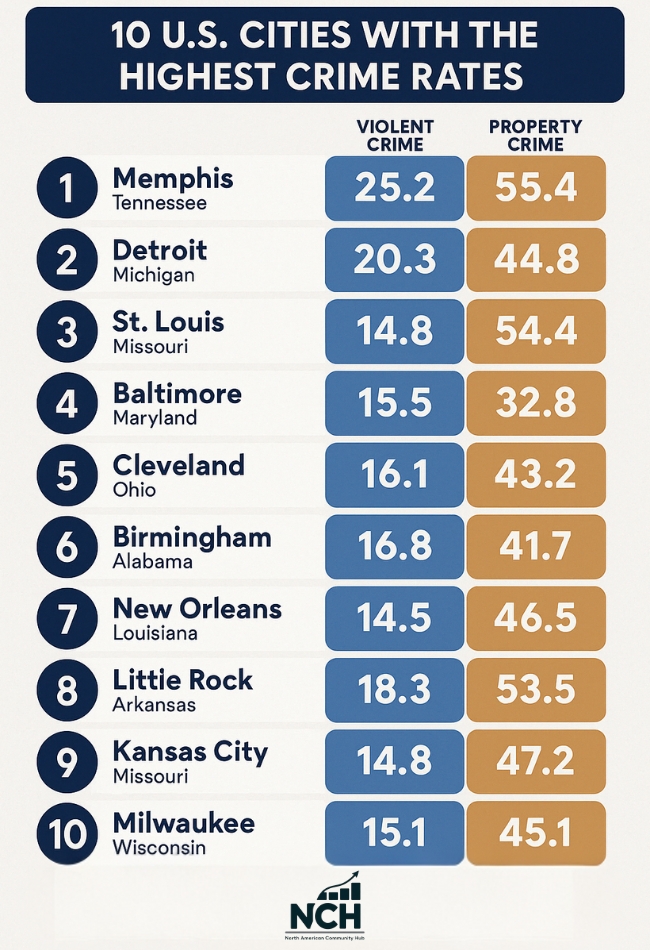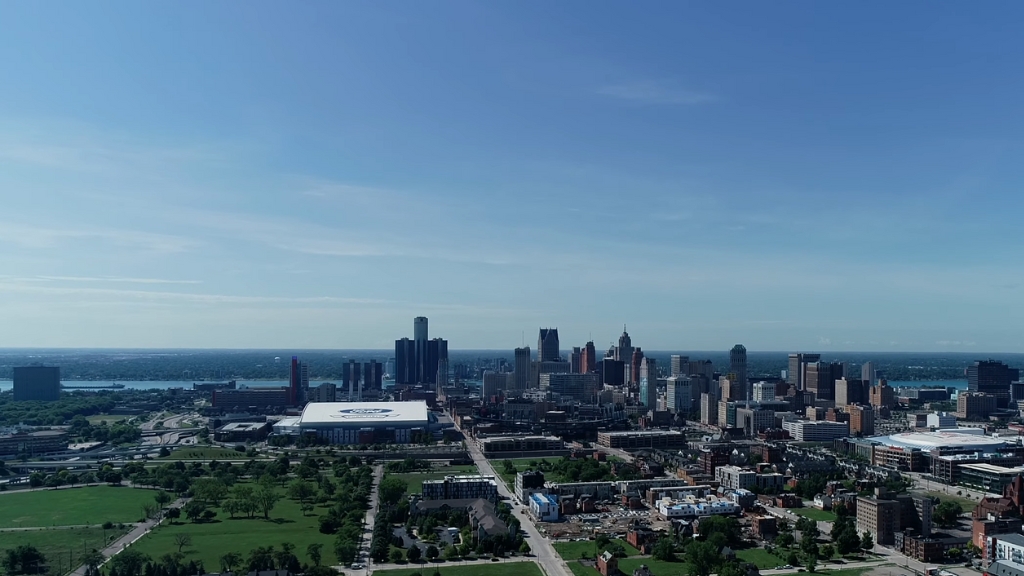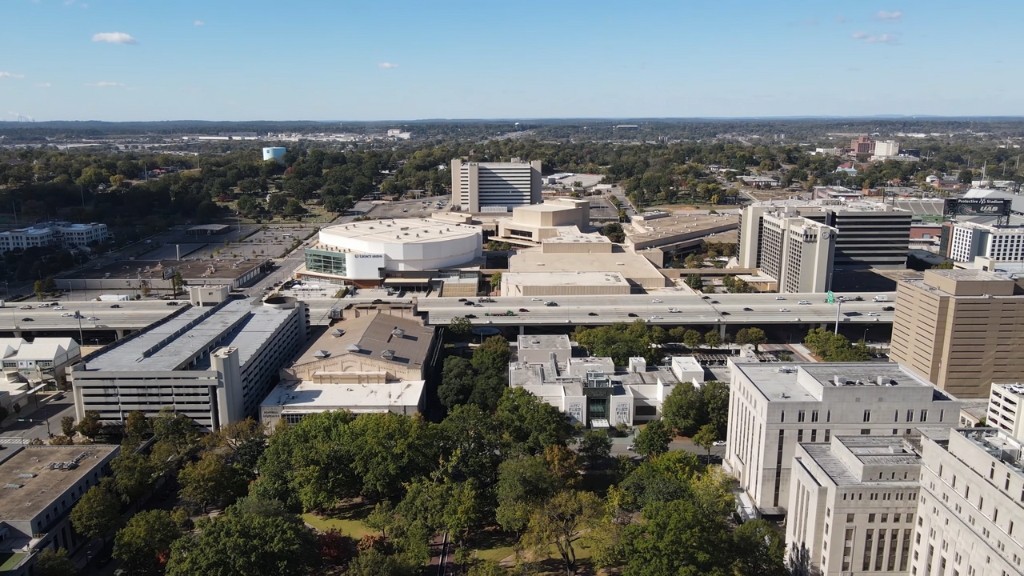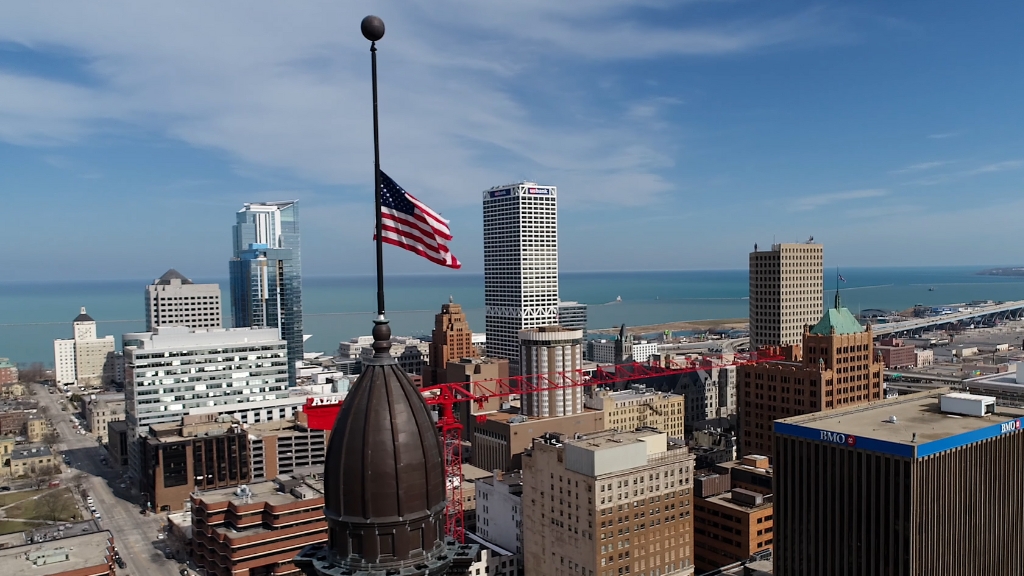As the United States continues to recover from pandemic-era crime surges, the national conversation around public safety remains front and center.
According to the latest FBI Crime Data Explorer, the nationwide violent crime rate in 2023 was approximately 3.6 incidents per 1,000 people, a slight decrease from the previous year, signaling a slow but steady downward trend in violent offenses.
Property crime, on the other hand, showed a mild uptick in many areas, reaching about 19.1 incidents per 1,000 residents.
While these averages offer some optimism, the story is dramatically different in certain cities where crime far exceeds national norms.
In these hotspots, violent crime rates are four to six times higher than average, and property crimes such as burglary, auto theft, and larceny occur at staggering rates.

Key Takeaways
- Violent crime in some U.S. cities is over 4× the national average
- Memphis, Detroit, and St. Louis top the list for overall crime rates
- Auto thefts, aggravated assaults, and homicides are major drivers of crime spikes
- Many high-crime cities share factors like poverty, gang activity, and police understaffing
- Some cities, like Baltimore and Cleveland, are seeing recent crime declines
- Local reform efforts and federal partnerships are helping reverse dangerous trends
1. Memphis, Tennessee
| Category | Total Incidents (annual) | Rate (per 1,000) | Nat. Average (per 1,000) |
| Violent Crime | ~16,000 | ~25.2 | 3.6 |
| Property Crime | ~35,000 | ~55.4 | 19.1 |
Memphis tops the nation in crime rates, with an estimated 25 violent incidents per 1,000 residents, over six times the national average, according to deepsentinel.com. This translates to more than 16,000 violent crimes a year in the city of ~630,000 people.
Property crimes are also extremely high at 55 per 1,000 – nearly three times the U.S. average. Memphis has long struggled with poverty (the city’s poverty rate hovers around 25%) and persistent gang activity, which experts cite as key drivers of crime, as noted by my.concealedcoalition.com.
High rates of aggravated assaults and robberies plague certain neighborhoods, and a surge in auto thefts in recent years has driven property crime upward (over 2,600 cars were stolen in just three months, with only 23 arrests), as noted by safehome.org.
View this post on Instagram
Violent crime in Memphis spiked around 2020–2021 and remains elevated, though 2023 saw homicide numbers level off slightly. City leaders have vowed new anti-gang initiatives and police reforms – including disbanding the controversial SCORPION unit in 2023 – to try to curb the violence.
Despite these challenges, parts of Memphis remain vibrant cultural centers; officials stress that crime is concentrated in specific areas, even as they acknowledge the urgent need for continued investment in policing and community programs to improve safety.
2. Detroit, Michigan
| Category | Total Incidents | Rate (per 1,000) | Nat. Average (per 1,000) |
| Violent Crime | 12,710 | 20.3 | 3.6 |
| Property Crime | 28,068 | 44.8 | 19.1 |
Detroit has a violent crime rate of about 20 per 1,000 residents, which is roughly 448% higher than the national average, according to areavibes.com. In 2023, over 12,700 violent offenses were reported in the city, including a high incidence of assaults and robberies.
Property crime is also widespread at 44.8 per 1,000 people (about 28,000 incidents annually), fueled by burglaries, carjackings, and theft in economically hard-hit neighborhoods.
Detroit’s crime problems are rooted in decades of socioeconomic struggle – the city’s population loss and severe economic decline in the early 2000s left many neighborhoods blighted and impoverished, conditions under which crime thrived.

There have been signs of progress in recent years: downtown and midtown Detroit have seen revitalization and increased investment, and overall crime has trended downward since its peak in the 1990s. Detroit’s violent crime in 2023 was down about 7% from the prior year as the police department expanded partnerships and targeted violent offenders, as noted by detroitmi.gov.
City officials highlight that some neighborhoods are rebounding with community policing and blight reduction efforts. However, many areas still experience alarmingly high rates of violent crime, and Detroit remains among the nation’s most dangerous cities.
Residents in some districts face daily gun violence, and the city continues to record one of the highest murder rates in the country (around 49 per 100,000 in 2022).
Combating crime in Detroit requires ongoing attention to root causes like unemployment (which remains above national averages) and entrenched poverty, in addition to law enforcement efforts.
3. St. Louis, Missouri
| Category | Total Incidents | Rate (per 1,000) | Nat. Average (per 1,000) |
| Violent Crime | ~4,600 | 14.8 | 3.6 |
| Property Crime | ~16,860 | 54.4 | 19.1 |
St. Louis consistently reports one of the highest violent crime rates in America. The city’s violent crime rate of ~14.7 per 1,000 residents is roughly four times the national average.
This includes an exceptionally high homicide rate – St. Louis often leads U.S. cities in murders per capita. (In 2022, the city saw about 200 murders, equating to 66 per 100,000 people, more than ten times the national murder rate.)
Aggravated assaults are also rampant, contributing to the nearly 4,600 violent offenses per year. Property crime is even more extreme, with an estimated rate of 54 per 1,000 residents, meaning a St. Louisan’s chance of being a victim of theft or burglary is roughly 1 in 18 each year.
Auto theft in particular has spiked – in one period, more than 2,600 vehicles were stolen in three months,– pushing property crime rates to among the worst nationwide.
The factors behind St. Louis’s crime are complex: the city has deep economic and racial segregation, pockets of concentrated poverty, and longstanding issues with gun violence (Missouri’s lax gun laws make firearms readily available in the city).
When @saintlouismayor was elected in 2021, her city struggled with a rise in crime. In 2024, overall crime in St. Louis was down by 15%—with homicides at an 11-year low—& that trend continues.
Read how St. Louis is leading the path toward a safer future:https://t.co/NjQ3PwFoPr
— U.S. Mayors (@usmayors) February 26, 2025
Policing in St. Louis has faced turmoil as well; the police department is understaffed and until recently was under city control (there’s been debate about reverting to state control to improve performance). On a hopeful note, violent crime has been trending downward.
By 2023–2024, St. Louis recorded a significant drop in homicides (33% lower in 2024 than in 2019), one of the largest declines in the country, according to Axios.com.
City officials credit violence interruption programs and federal partnerships for this progress. Even with recent improvements, however, St. Louis’s crime rate remains exceptionally high.
The city is working on initiatives like hotspot policing and youth outreach, and the newly elected circuit attorney has vowed to prosecute violent offenders more assertively after criticism of past prosecutorial practices. St. Louis’s situation illustrates how even the “most dangerous” cities can see improvements, but sustained effort is needed to address underlying social ills and maintain the downward trend.
4. Baltimore, Maryland
| Category | Total Incidents | Rate (per 1,000) | Nat. Average (per 1,000) |
| Violent Crime | 8,861 | 15.5 | 3.6 |
| Property Crime | 18,699 | 32.8 | 19.1 |
Baltimore has battled persistently high crime for decades, especially violent crime. The city’s violent crime rate is about 15.5 per 1,000 residents, which is nearly five times the national average.
In a typical year, Baltimore sees around 8,000–9,000 violent offenses, including over 300 homicides (the city’s homicide rate has often exceeded 50 per 100,000). This violence is fueled by entrenched drug trafficking organizations and gangs; Baltimore became notorious for its drug-related turf wars (as depicted in The Wire).
Socioeconomic disparities are stark: parts of West and East Baltimore suffer from high unemployment, poverty, and vacant housing, creating an environment where violent crime flourishes.
Property crime, while lower than in some other high-crime cities, is still elevated at 32.8 per 1,000 (about 18,700 incidents a year), as noted by areavibes.com. Burglaries, larcenies, and car thefts remain common, although they’re not rising as sharply as violent offenses in recent years. There is some good news: Baltimore’s overall crime has started to decline.

In 2023, the city experienced a historic drop in homicides – around 21% fewer killings than the year before, according to wbaltv.com. Through innovative strategies like group violence intervention, increased federal prosecution of gun crimes, and community-based “violence interrupter” programs, Baltimore saw its first year under 300 murders since 2014.
Non-fatal shootings and robberies also declined in 2023, and early 2024 data showed continued improvement.
City leaders have credited these “citywide coordination” efforts for the 40% decrease in homicides since 2019, though they caution that sustained funding is needed to keep violence down.
Baltimore’s police department, operating under a federal consent decree, has been reforming after past scandals (such as the Gun Trace Task Force corruption case), and has focused on rebuilding community trust.
Still, Baltimore remains one of America’s most dangerous cities, with violent crime rates far above other cities its size. Long-term solutions – addressing drug addiction, providing economic opportunities, and improving education – are as critical as policing to continue the downward trend and shed the city’s violent reputation.
5. Cleveland, Ohio
| Category | Total Incidents | Rate (per 1,000) | Nat. Average (per 1,000) |
| Violent Crime | 5,870 | 16.1 | 3.6 |
| Property Crime | 15,704 | 43.2 | 19.1 |
Cleveland has the unfortunate distinction of being one of the most crime-ridden cities in the Midwest, with a violent crime rate of about 16.1 per 1,000 residents (approximately 5,870 violent crimes annually),as noted by areavibes. That rate is over 4× the national average, placing Cleveland in the bottom 10% of U.S. cities for safety.
High rates of shootings and robberies have plagued Cleveland’s east side neighborhoods in particular, driven by factors like poverty (about 30% of residents live below the poverty line) and long-term population decline, which has left pockets of urban decay. Gang activity and the illicit drug trade (especially opioids) contribute significantly to violence in the city.
Property crime in Cleveland is also very high at 43.2 per 1,000 people, meaning roughly a 1 in 23 chance each year of being a victim of theft, burglary, or vehicle theft. Indeed, Cleveland has seen a surge in vehicle thefts – nearly 4,000 cars stolen in the last reported year – due in part to a nationwide trend of certain car models being targeted.
Despite these grim figures, Cleveland has shown recent progress in reducing crime.
In 2023, Cleveland’s homicide total fell to 120 (after peaking at 180 in 2020), and as of 2024, the city was on pace for its lowest homicide count in five years, according to ideastream.org. Officials credit initiatives like the RISE program (a violence reduction strategy coordinating police with community outreach) for a 43% drop in homicides in early 2024
Overall, violent crime reports were also down in 2024. The Cleveland Division of Police has expanded neighborhood policing and partnered with federal task forces to target repeat violent offenders, which seems to be yielding results.
Nonetheless, Cleveland’s crime rate remains about 155% higher than the U.S. average overall, and residents in many neighborhoods still experience unsafe conditions. The city is focusing on improving economic conditions – bringing jobs and redevelopment to blighted areas – in tandem with law enforcement, in hopes of sustaining the recent improvements in public safety.
6. Birmingham, Alabama
| Category | Total Incidents | Rate (per 1,000) | Nat. Average (per 1,000) |
| Violent Crime | 3,280 | 16.8 | 3.6 |
| Property Crime | 8,139 | 41.7 | 19.1 |
Despite its mid-sized population (~197,000), Birmingham regularly ranks among the highest-crime cities in the country. The violent crime rate in Birmingham is about 16.8 per 1,000 residents, as per Areavibes, roughly 4.7 times the national average.
In 2022, Birmingham suffered 150 homicides (76 per 100,000 people) according to bhamwiki.com – one of the highest murder rates in the U.S., and aggravated assaults and shootings are prevalent.
Birmingham’s challenges are rooted in concentrated poverty and a history of segregation and disinvestment in certain neighborhoods. Unemployment and poverty in the city remain above national norms, and some communities on the west and north sides grapple with gang violence and an active drug trade.
Property crime in Birmingham is also very high at 41.7 per 1,000 residents, including frequent home break-ins, car thefts, and shoplifting. The city recorded over 8,100 property crime incidents in the latest year of data.

However, not all trends are negative – Birmingham’s police noted that overall violent crime (excluding homicide) fell about 7% in 202, even as homicides remained troublingly high.
Police officials attribute the homicide spike partly to the proliferation of “Glock switches” (illegal firearm modifications) in 2024 that enabled more lethal shootings..
In response, Birmingham has doubled down on federal partnerships to prosecute gun crimes and set up a Real Time Crime Center to monitor hot spots. Community programs aimed at youth and improved witness cooperation have also been credited with some success. By 2024, the city was solving more shootings with help from residents speaking.
Birmingham’s mayor has called violence reduction his top priority, pushing initiatives like gang intervention and blight removal to improve neighborhood conditions. While these efforts have shown some promise, Birmingham’s crime rate remains among the nation’s worst.
The city is often listed alongside far larger metros for violent crime, underscoring the severity of the problem in a community its size. Substantial, sustained investment in public safety and socioeconomic uplift will be required to pull Birmingham out of its cycle of high crime.
7. New Orleans, Louisiana
| Category | Total Incidents (2022) | Rate (per 1,000) | Nat. Average (per 1,000) |
| Violent Crime | ~5,348 | 14.5 | 3.6 |
| Property Crime | ~17,199 | 46.5 | 19.1 |
New Orleans experienced a well-publicized surge in violence during 2022, culminating in the city briefly holding the title of highest murder rate in the U.S. that year (72 homicides per 100,000 people).
Overall, the violent crime rate stands around 14.5 per 1,000 residents, placing it among the nation’s most dangerous cities. This includes gun violence related to drug trafficking and retaliatory gang feuds in several neighborhoods; armed robberies that target both locals and tourists; and a rate of assaults well above the national norm.
Property crime in New Orleans is also extremely high at 46.5 per 1,000
Each year, the city sees roughly 17,000 property crime incidents, including extensive theft problems (shoplifting and pickpocketing in tourist areas are common, and vehicle break-ins have long been an issue – the phrase “smash and grab” is familiar to any French Quarter visitor).
Socioeconomic factors contribute to New Orleans’ crime woes: the city has a 23% poverty rate, and many underserved communities are still struggling in the aftermath of Hurricane Katrina’s dislocation and subsequent economic hardships.
View this post on Instagram
The New Orleans Police Department has also faced challenges, including a shrinking force (NOPD staffing hit a 50-year low in 2022) and low morale amid criticisms of slow 911 response times. However, recent trends offer cautious optimism.
Violent crime started dropping in 2023, with murders falling to 193 (down from 266 in 2022). By mid-2024, New Orleans saw double-digit percentage declines in shootings and carjackings compared to the prior year
City officials credit strategies like pay raises to retain police officers, recruitment of additional civilian staff to handle administrative tasks, and improved coordination through a multi-agency Violent Crime Reduction Task Force. Community anti-violence programs and increased federal prosecutions of gang leaders have also been factors.
While New Orleans remains dangerous – its 2023 murder rate (around 54 per 100,000) was still among the nation’s highest according to rit.edu – the momentum is positive. The mayor and police superintendent have highlighted the importance of sustaining these efforts, especially as tourism (a lifeblood of the local economy) rebounds.
In sum, New Orleans’ crime story is one of a city still fighting significant violence and theft, but one that is potentially turning a corner through concerted crime-fighting and community investment after a particularly deadly period.
8. Little Rock, Arkansas
| Category | Total Incidents | Rate (per 1,000) | Nat. Average (per 1,000) |
| Violent Crime | 3,694 | 18.3 | 3.6 |
| Property Crime | 10,778 | 53.5 | 19.1 |
Areavibes notes that Little Rock may surprise some with its inclusion on this list, but Arkansas’s capital has one of the highest per capita crime rates in the nation. The violent crime rate in Little Rock is about 18.3 per 1,000 people, which is nearly 4× the U.S. average.
With a population of just over 200,000, Little Rock saw approximately 3,700 violent crimes last year, including a few dozen homicides (the city often records between 40 and 70 murders annually) and a high number of aggravated assaults. Gang activity and drug-related violence significantly contribute to Little Rock’s crime problem.
The city was historically known for gang conflicts (famously documented in the 1990s), and while the gang landscape has evolved, modern groups linked to drug distribution continue to drive shootings.
Little Rock’s police note that a subset of repeat offenders is responsible for a disproportionate share of violent incidents. On the economic side, Little Rock has higher poverty and unemployment rates than the national average, factors that correlate with crime.

In terms of property crime, Little Rock is among the worst in the country with a rate of 53.5 per 1,000 residents. Roughly 1 in 19 residents per year are victims of property crimes (burglary, larceny, or vehicle theft).
The city had about 10,800 property crimes in the latest data, reflecting issues like a regional spike in catalytic converter and car thefts, as well as persistent burglary problems. Despite these challenges, Little Rock officials have pointed to some recent improvements: by 2023, the city reported slight decreases in robberies and a small dip in overall violent crime from pandemic-era highs.
Community-oriented policing programs (like a “Walk the Block” initiative to build police-resident relationships) and investment in youth mentorship and summer jobs have been strategies the city is using to address root causes. Additionally, federal authorities have assisted by prosecuting some of the most violent gang members under Operation Ceasefire.
Little Rock’s crime rate remains very high, but local leaders emphasize that the violence is concentrated in specific neighborhoods. Continued focus on gang intervention and economic development in those areas is seen as key to making Arkansas’s capital a safer place.
9. Kansas City, Missouri
| Category | Total Incidents | Rate (per 1,000) | Nat. Average (per 1,000) |
| Violent Crime | 7,538 | 14.8 | 3.6 |
| Property Crime | 23,995 | 47.2 | 19.1 |
Kansas City, the largest city in Missouri, has a violent crime rate of about 14.8 per 1,000 residents, as per areavibes.com, placing it among the top tier of violent cities in the country.
In 2023, KCMO recorded 7,538 violent crimes, N C including a record-high 181 homicides.
That homicide count gave Kansas City a murder rate of roughly 33 per 100,000 – one of the worst among big cities and far above the national murder rate. Aggravated assaults are particularly prevalent (over 5,700 reported in the latest year), often stemming from gun violence.
Missouri’s relaxed gun laws and Kansas City’s gang conflicts (such as those around drug trafficking and neighborhood feuds) have contributed to frequent shootings.
The city has also struggled with spikes in drive-by shootings and road rage incidents in recent years. Kansas City’s violent crime is geographically concentrated, with the East Side and parts of the South Side enduring the most incidents, correlating with areas of high poverty and unemployment.
On the property crime side, the city fares poorly as well: the rate is 47.2 per 1,000 residents, meaning nearly a 1 in 21 chance of being a victim of theft or similar crimes each year. Auto theft is a major issue – Kansas City has one of the highest vehicle theft rates in the Midwest (over 9,000 auto thefts in the last year, about 1,776 per 100,000 people)
Burglary and larceny rates are also above average, though not as dramatically as violent crime. Officials in Kansas City acknowledge the seriousness of the problem: the city’s police department has been grappling with staffing shortages, even as it launches hot-spot policing projects and gun violence reduction programs.
In 2023, Missouri’s legislature gave the state more oversight of Kansas City’s police due to concerns about rising crime, an unusual arrangement that underscores the urgency.
There have been some positive developments – by early 2024, Kansas City saw a small dip in homicides compared to the prior year, and community groups have increased efforts to mediate gang disputes before they turn violent. The overall crime rate is about 167% higher than the U.S. average.
Kansas City’s leaders emphasize that many neighborhoods (especially in the Northland and peripheral areas) are quite safe, but the city’s national image is increasingly defined by its violent core.
Reducing crime will likely require a combination of tough enforcement (e.g., focusing on gun offenders) and tackling social issues like housing instability and education in the long-neglected parts of the city.
10. Milwaukee, Wisconsin
| Category | Total Incidents | Rate (per 1,000) | Nat. Average (per 1,000) |
| Violent Crime | 8,474 | 15.1 | 3.6 |
| Property Crime | 19,702 | 35.1 | 19.1 |
Sources note that Milwaukee, the largest city in Wisconsin, has emerged as one of the nation’s most violent large cities in recent years. The violent crime rate is about 15.1 per 1,000 residents, which is approximately four times the national average.
In 2022, Milwaukee’s homicide tally hit a record 214 killings amid a pandemic-era surge in violence, according to badgerinstitute.org.
The city has since seen some improvement – homicides dropped to 172 in 2023 and further to 132 in 2024 as per wpr.org – but overall, violent crime remains high.
Milwaukee reports around 8,000+ violent crimes annually, including a large number of shootings and armed robberies. Contributing factors include entrenched poverty (Milwaukee consistently ranks among the poorest big cities; about 24% of residents are below the poverty line) and hyper-segregation – generations of segregation have concentrated disadvantage (and crime) in certain north-side neighborhoods.
Gang presence is a factor, though much of Milwaukee’s violence is interpersonal or related to arguments and retaliations rather than organized gang wars.
Property crime in Milwaukee, at 35.1 per 1,000, is also above the national average, though notably lower than some other cities on this list. The city recorded about 19,700 property crimes in the latest year, with theft being by far the most common (Milwaukee had over 7,100 larcenies and 5,600 car thefts reported).

Milwaukee infamously became a hotspot for vehicle thefts involving Kia/Hyundai models in 2021–2022 due to a viral social media challenge exploiting a security flaw; this drove auto theft numbers to extraordinary heights. By 2023, those thefts began t,o ease after the automakers provided anti-theft software updates and the state toughened penalties.
The Milwaukee Police Department has credited a 23% decrease in car thefts and targeted patrols for helping reduce overall crime in 2023, as per. Additionally, a violence reduction initiative called the 414 LIFE program, which uses street outreach to interrupt conflicts, has been expanded and is believed to have helped lower shooting incidents.
Despite these efforts, Milwaukee still ranks in the bottom 10% of cities for both violent and property crime rates.
City officials stress the need to address root causes: Milwaukee’s school system, economic opportunities, and access to mental health and addiction services all require improvement to steer at-risk individuals away from crime.
The recent downward trend in homicides has been encouraging, but Milwaukee’s overall crime rate remains about 116% above the national average. As the city continues to work on reforms (including a new police chief’s focus on community trust and data-driven deployment), residents and leaders alike hope to see Milwaukee shed its “dangerous city” label in the coming years.
Bottom Line
Crime in the United States remains uneven. Some cities are safer, others are not. Memphis, Detroit, and St Louis face heavy violence and poverty. Many families live with fear each day.
Baltimore and Cleveland have made progress. Police and local groups work together to cut murders. Other cities try to follow the same path.
Real safety depends on more than arrests. It needs jobs, fair homes, and respect among people. Every town in the country deserves calm streets and a fair chance for all.


